Odilon Redon (1840-1916)
Odilon Redon (born Bertrand Redon (April 20, 1840 – July 6, 1916) was a French symbolist painter, printmaker, draughtsman and pastellist.
Odilon Redon was born in Bordeaux, Aquitaine, to a prosperous family. The young Bertrand Redon acquired the nickname "Odilon" from his mother, Odile. Redon started drawing as a child; and, at the age of ten, he was awarded a drawing prize at school. He began the formal study of drawing at fifteen; but, at his father's insistence, he changed to architecture. Failure to pass the entrance exams at Paris’ École des Beaux-Arts ended any plans for a career as an architect, although he briefly studied painting there under Jean-Léon Gérôme in 1864. (His younger brother Gaston Redon would become a noted architect.)
Back in his native Bordeaux, he took up sculpting, and Rodolphe Bresdininstructed him in etching and lithography. His artistic career was interrupted in 1870 when he was drafted to serve in the army in the Franco-Prussian Waruntil its end in 1871.
At the end of the war, he moved to Paris and resumed working almost exclusively in charcoal and lithography. He called his visionary works, conceived in shades of black, his noirs. It was not until 1878 that his work gained any recognition with Guardian Spirit of the Waters; he published his first album of lithographs, titled Dans le Rêve, in 1879. Still, Redon remained relatively unknown until the appearance in 1884 of a cult novel by Joris-Karl Huysmanstitled À rebours (Against Nature). The story featured a decadent aristocrat who collected Redon's drawings.
In the 1890s pastel and oils became his favored media; he produced no more noirs after 1900. In 1899, he exhibited with the Nabis at Durand-Ruel's.
Redon had a keen interest in Hindu and Buddhist religion and culture. The figure of the Buddha increasingly showed in his work. Influences of Japonism blended into his art, such as the painting The Death of the Buddha around 1899, The Buddha in 1906, Jacob and the Angelin 1905, and Vase with Japanese warrior in 1905, amongst many others.
Baron Robert de Domecy (1867–1946) commissioned the artist in 1899 to create 17 decorative panels for the dining room of the Château de Domecy-sur-le-Vault near Sermizelles in Burgundy. Redon had created large decorative works for private residences in the past, but his compositions for the château de Domecy in 1900–1901 were his most radical compositions to that point and mark the transition from ornamental to abstract painting. The landscape details do not show a specific place or space. Only details of trees, twigs with leaves, and budding flowers in an endless horizon can be seen. The colours used are mostly yellow, grey, brown and light blue. The influence of the Japanese painting style found on folding screens byōbu is discernible in his choice of colours and the rectangular proportions of most of the up to 2.5 metres high panels. Fifteen of them are located today in the Musée d'Orsay, acquisitioned in 1988.
Domecy also commissioned Redon to paint portraits of his wife and their daughter Jeanne, two of which are in the collections of the Musée d'Orsay and the Getty Museum in California. Most of the paintings remained in the Domecy family collection until the 1960s.
In 1903 Redon was awarded the Legion of Honor. His popularity increased when a catalogue of etchings and lithographs was published by André Mellerio in 1913; that same year, he was given the largest single representation at the groundbreaking U.S. International Exhibition of Modern Art (aka Armory Show), in New York City, Chicago and Boston.
Redon died on July 6, 1916. In 1923 Mellerio published Odilon Redon: Peintre Dessinateur et Graveur. An archive of Mellerio's papers is held by the Ryerson & Burnham Libraries at the Art Institute of Chicago.
In 2005 the Museum of Modern Art launched an exhibition entitled "Beyond The Visible", a comprehensive overview of Redon's work showcasing more than 100 paintings, drawings, prints and books from The Ian Woodner Family Collection. The exhibition ran from October 30, 2005 to January 23, 2006.
The Grand Palais in Paris, France featured a vast exhibition of Redon's art from March to June 2011.
The Fondation Beyeler in Basel, Switzerland showed a retrospective from February to May 2014.
The Kröller-Müller Museum in Otterlo, The Netherlands, currently has an exhibition with an emphasis on the role that literature and music play in Redon’s life and work, under the title La littérature et la musique. The exhibition runs from 2 June to 9 September 2018.
During his early years as an artist, Redon's works were described as "a synthesis of nightmares and dreams", as they contained dark, fantastical figures from the artist's own imagination. His work represents an exploration of his internal feelings and psyche. He himself wanted to place "the logic of the visible at the service of the invisible". A telling source of Redon's inspiration and the forces behind his works can be found in his journal A Soi-même (To Myself). His process was explained best by himself when he said:
"I have often, as an exercise and as a sustenance, painted before an object down to the smallest accidents of its visual appearance; but the day left me sad and with an unsatiated thirst. The next day I let the other source run, that of imagination, through the recollection of the forms and I was then reassured and appeased."
The art historian Michael Gibson says that Redon began to want his works, even the ones darker in color and subject matter, to portray "the triumph of light over darkness."
Redon described his work as ambiguous and undefinable:
"My drawings inspire, and are not to be defined. They place us, as does music, in the ambiguous realm of the undetermined.”
Odilon Redon
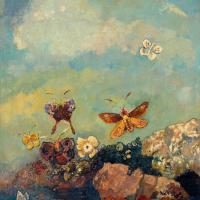 $299.00
$299.00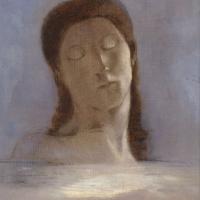 $450.00
$450.00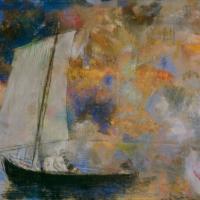 $450.00
$450.00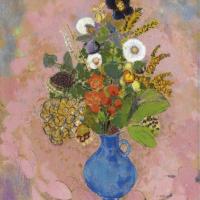 $289.00
$289.00 $450.00
$450.00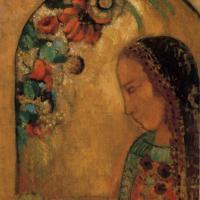 $450.00
$450.00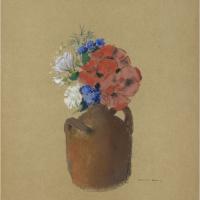 $450.00
$450.00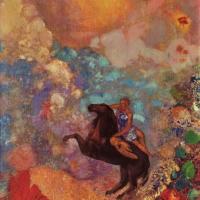 $450.00
$450.00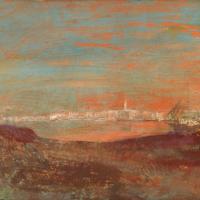 $450.00
$450.00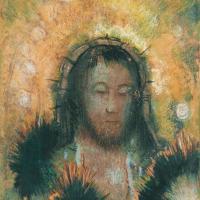 $450.00
$450.00

